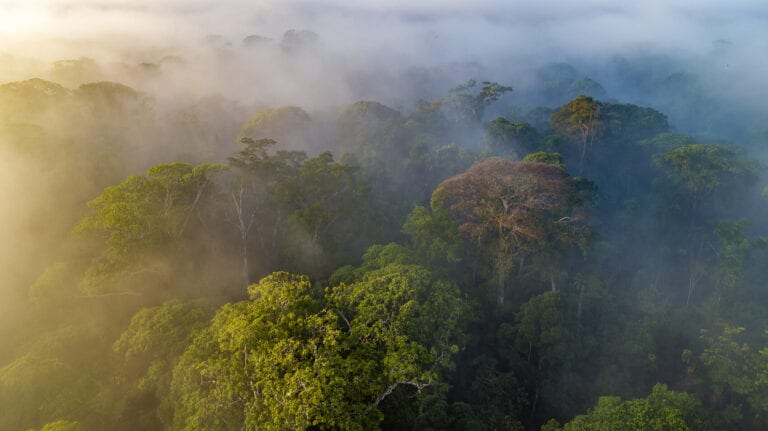Home » Biodiversity » Ecological Diversity And Its Role In Nature

An introduction to the ecological hierarchy
What is ecological diversity?
Ecological diversity is the largest scale of biodiversity. On a global scale, ecological diversity would look into the variation in ecosystems such as deserts, grasslands, forests, oceans, and wetlands. Within each ecosystem, there is a great deal of both species and genetic diversity. Ecological diversity considers the variation in the complexity of a biological community, looking at the number of niches and trophic levels there are and ecological processes ( 1). We will discuss how variation among species is essential for ecosystem stability and how this, therefore, connects to our planet’s ecological diversity. Furthermore, we will look at how diversity acts to stabilize existing ecosystems functioning in environmental fluctuations.
Why is variation among species essential for ecosystem stability?
Ecosystem stability is an ecosystem’s ability to maintain a steady state, even after stress or disturbance has occurred. ‘The Diversity-Stability Theory’ (2) suggests that there are multiple relationships between diversity and stability. This looks at how we define stability, depending on the scenario. In specific scenarios, species traits rather than species richness are the driving force stabilizing the system. Why? Well, biologically diverse communities are more likely to contain species that possess characteristics of resilience to that ecosystem as the community accumulates species, there is a higher chance of anyone of them having the traits that enable them to adapt to a changing environment and therefore act as a buffer to the ecosystem against the loss of other species. This is also known as ‘the insurance hypothesis’ (3).
The alternative scenario defines stability at the species level. The more diverse assemblages have lower species-level stability due to the limit to the number of individuals in each community. Due to random fluctuations, it has been suggested that it is more likely that a particular species will go extinct locally if the population size is small, and therefore by increasing diversity in communities, there will be a corresponding greater chance of destabilizing the system (4).
A great example of how we could look at this discussion regarding ecosystem-level stability and species-level stability was demonstrated in a study by Tilman in 2006(5). Plots were weeded to prevent new species invasions, and ecosystem stability was measured as the stability of primary production over ten years. Researchers found that the more diverse the plots were, the more stable production was over time. In contrast, population stability declined in the more diverse plots, suggesting that an increase in species diversity would increase the ecosystem-level strength but negatively correlate with species-level stability.
The future in the face of environmental fluctuations
Biodiversity loss in the coming decades will no doubt continue due to climate change and other human-driven environmental changes. Biodiversity is a term that can be looked at in a variety of different scales. It is the effect on species diversity that plays an essential role in ecosystems in which local and global species loss could threaten the stability of the ecosystem services on which humans depend (6). As we have already discussed, stability can be defined in multiple ways. Termed as ‘the resistance of a system,’ this definition of a stable system looks into one with low variability despite shifting environmental conditions and indicates the ability of an ecosystem to return to its original state following disturbance.
Over the past 50 years, humans have changed ecosystems more rapidly and extensively than in any comparable period in human history, largely to meet rapidly growing demands for food, fresh water, timber, fiber, and fuel. This has resulted in a substantial and largely irreversible loss in the diversity of life on earth” (7)
With the loss of biodiversity on Earth being considered a significant threat to ecosystems and human well-being, to halt the loss of biodiversity, policies at global, continental, and regional scales have been launched. However, it has been suggested that further developments such as a comprehensive and standardized design are needed in order to compare across different areas and ecosystems and therefore help develop biodiversity indicators linked to the genetic, species, population, and community levels of diversity (8). In turn, by identifying the reliable thresholds for ecosystem services, this could help maintain the services at a level required by society.

Founder of Grow Jungles